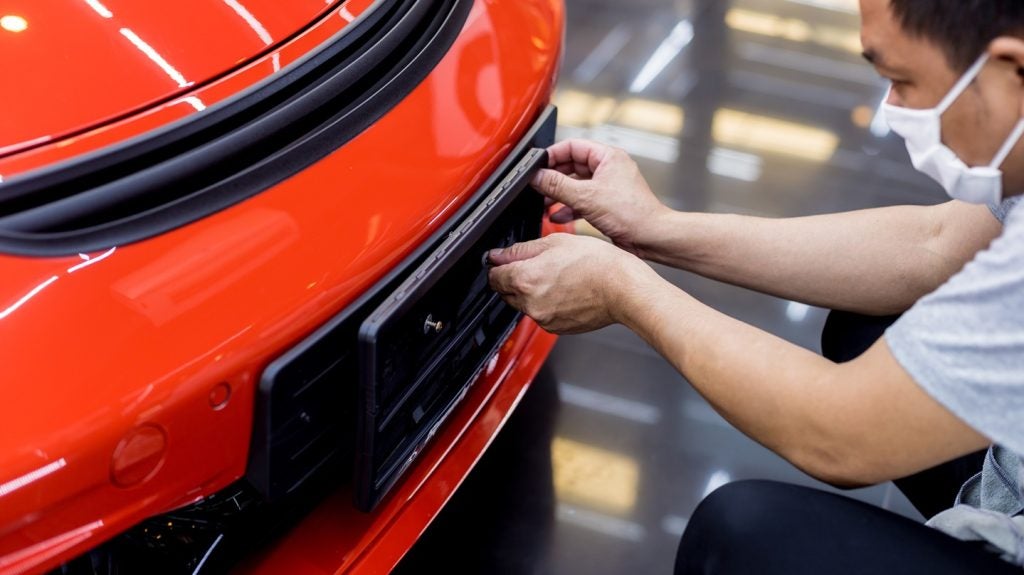If you want to see what the post-pandemic auto finance industry will look like, look to China.
The Covid-19 pandemic began in China, and as it progressed the country became a sort of preview of what would soon be happening everywhere else in the world.
This was true not only in terms of epidemiology but also in how markets performed, and how industries would cope under new risks and restrictions. Often, a look at the markets in China was a glimpse of what markets elsewhere would look like in two or three months.
Today, China is showing us what recovery may look like. The Chinese economy as a whole rebounded by more than 18% year-on-year during the first quarter of 2021, compared to a shrinkage of 6.8% during the same period a year earlier. The World Bank has already predicted growth in excess of 8% for 2021.
Even where the market has suffered, the damage has not been as bad as some feared. The China Association of Automobile Manufacturers (CAAM) has shown that total vehicle sales in China last year declined by only 1.9% to 25.3 million units.
On the finance side of the business the market was still growing before the pandemic hit, with the Global & Chinese Automotive Finance Industry Report 2020-2026 reporting finance penetration had surged to 48% in 2018, and 52% in 2019, figures that speak optimistically for the sector but which are well below the global figure of 70%, expected to rise to 71% by 2026.
How well do you really know your competitors?
Access the most comprehensive Company Profiles on the market, powered by GlobalData. Save hours of research. Gain competitive edge.

Thank you!
Your download email will arrive shortly
Not ready to buy yet? Download a free sample
We are confident about the unique quality of our Company Profiles. However, we want you to make the most beneficial decision for your business, so we offer a free sample that you can download by submitting the below form
By GlobalDataDriven by policy
The auto finance sector and the automobile market as a whole in China have been encouraged by a rebounding economy and proactive government policies designed to encourage car sales. Beijing has instituted a huge government stimulus programme alongside low-interest rates, credit availability and incentives for purchases which helped to lift demand for vehicles during the second half of 2020.
The cancellation of the policy of used vehicle traffic restriction has kept the used car trade on a steady increase in China. The sector reached 14.92m units in 2019, with a year-on-year spike of 8%, far above the growth rate for new car sales. By the end of 2019, the penetration of the used car finance sector was approximately 14.1% in China, but there is still a great deal of room for growth.
“During the recovery of China’s automotive market during the second half of 2020, sales of EVs picked up particularly strongly.”
Acceptance of used cars is growing among consumers as urbanisation accelerates in China, which in turn will create a lucrative market for the auto finance sector.
As tax cuts are introduced and the rules on limited migration for used cars are abolished, the industry is extremely optimistic about this sector’s prospects, with the penetration ratio of China’s used car finance expected to be up to 34% by 2026, according to CAAM figures.
While the used vehicle sector is a bright new frontier, the new vehicles sector has also seen a sales surge of 52% to 8,748,000 units during the first four months of 2021, compared with 5,761,000 units during the same period in 2020.
The electric age
The other big change that will be affecting the automotive market is the move towards electrification. As in the pandemic, China is ahead of the curve in the electric vehicle (EV) market. During the recovery of China’s automotive market during the second half of 2020, sales of EVs picked up particularly strongly.
New energy vehicles (NEVs) saw sales increase by nearly 50% to 248,000 units last December, and by almost 11% to 1.367m units throughout 2020. That figure included 1.116m fully EVs and 251,000 plug-in hybrid cars.
That growth has continued to accelerate as this year has seen sales of NEVs increase by 180% to 206,000 units in April and by 249% to 732,000 units year-to-date with passenger vehicles accounting for 694,000 of these.
The deputy secretary-general of CAAM, Ye Shengji, has said that he expects NEV sales to jump by nearly 40% to 1.8m units over the course of this year. He believes that consumers are becoming more willing to buy EVs as the technology improves in terms of battery reliability and range.
That growth comes on top of the fact that China is already the largest market for EVs in the world by a large margin.
The contenders
For now, the EV market in China is dominated by big, recognised names such as Tesla, Xpeng, and Nio, and these brands have helped to build the profile of EVs in China. But the market has a chance to diversify as smaller, low cost, locally manufactured models enter the market.
The Shanghai-GMWuling Hong Guang MINI EV is one such model that has made significant contributions to the market, with its 120km-range variant priced at just US$4,400.
In the post-pandemic world, this fills an important niche for low-cost personal transportation, especially for urban professionals. It is joined by other low-cost models such as the Great Wall Ora R1, SAIC’s Baojun E-series and the Chery eQ.
This pattern is reflected in China’s auto finance market as well, with automotive finance companies outperforming commercial banks to hold 45% of the market share in 2018 thanks to superiority in licenses, resources and 4S stores.
However, the online sector is also rapidly making headway with companies such as Alibaba, Tencent, Baidu, JD.com, and Autohome taking a foothold in the market. Late in 2019 JD Finance rolled out its online instalment product Car IOU, a one-stop auto finance services for buyers.
These firms still face a steep challenge taking on manufacturer-backed auto finance companies, with businesses such as chedai.com and mljr.com already facing bankruptcy.
In the aftermath of the Covid-19 pandemic, market concentration is expected to increase alongside client trust in automakers and automotive finance companies, who are expected to control as much as 55% of the market by 2026. Whether those trends are also going to be reflected in the global market remains to be seen.







